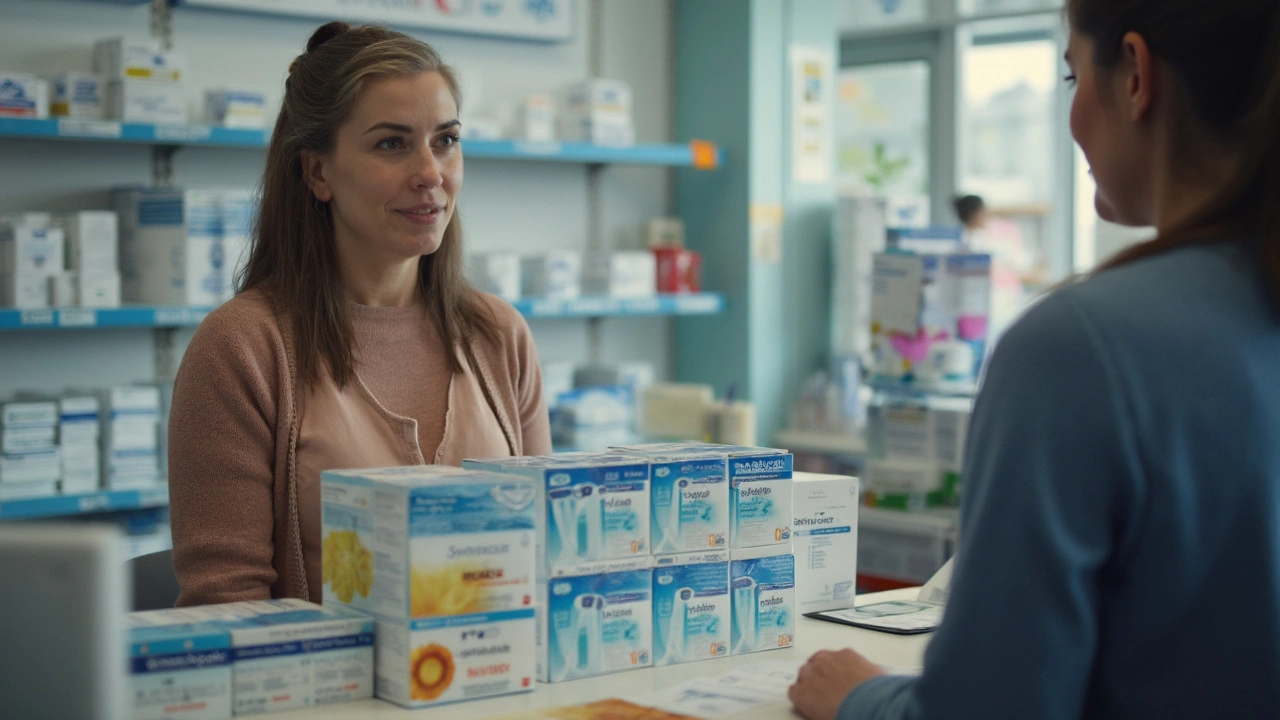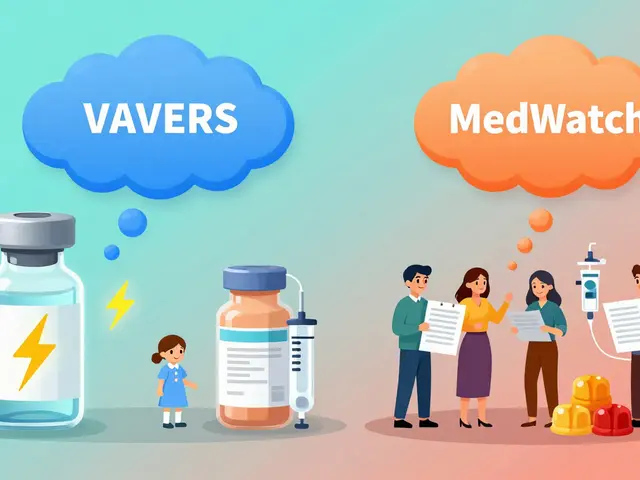Ever glanced at your pharmacy receipt and wondered how a tiny inhaler could pack such a hefty price tag? For people managing asthma or COPD, the sticker shock from Symbicort’s price isn’t just annoying—it can mean choosing between breathing easy and saving money for groceries. The search for sensible, wallet-friendly alternatives isn’t just about pinching pennies. It’s about staying healthy without breaking the bank. Cheap options exist, but not all are equally good or easy to get. Let's dive right into practical alternatives backed by real stats, expert advice, and tricks you can use now, not six months from now.
What’s in a Symbicort Inhaler and Why Does It Cost So Much?
Symbicort’s blend of budesonide and formoterol makes it a powerful two-in-one inhaler for both asthma and COPD. Budesonide tames swelling in your airways, and formoterol relaxes tight muscles so you can breathe better fast. It’s clinically proven, works quickly, and is part of international guidelines for long-term management of breathing problems. But here’s the clincher: Symbicort’s still under patent in many spots, and there hasn’t been much competition from generics. That, and the complex inhaler design, drive costs up in the U.S. far beyond what patients in most other countries pay.
Did you know the average retail price for a Symbicort inhaler in the U.S. sits around $300-350 per unit as of 2025? Compare that to Canada, where prices hover closer to $120, or the UK, where it’s even less. Health insurance can knock the cost down, but high co-pays and deductibles mean even insured folks often pay $40 or more per fill. Here’s a look at how pricing stacks up around the world:
| Country | Avg. Out-of-Pocket Price (USD) |
|---|---|
| United States | $325 |
| Canada | $120 |
| United Kingdom | $40 |
| Australia | $70 |
| India | $25 |
So where are all the **symbicort alternatives** hiding, and just how much can you actually save? There’s more out there than you might think, especially with generic options now showing up in 2025.
Generic Budesonide/Formoterol: Same Meds, Smaller Tab
The past few years, generic inhalers have started showing up in the US market, promising the same symptom control for less. The FDA approved generic budesonide/formoterol fumarate dihydrate inhalers to help close the cost gap, and the timing couldn't be better for folks tired of shelling out full price. Most generics match Symbicort's dosages—especially the 80/4.5 mcg and 160/4.5 mcg per actuation. Because the formulas are virtually identical, your body reacts to them the same way as the original.
- Generic manufacturers making US-approved versions: Viatris (Mylan), Teva, and Hikma.
- Quality and reliability are tightly regulated by the FDA—generics must deliver the same dose, in the same way, as Symbicort itself.
- Expect to pay $90-$150 for a month supply if you have insurance. Without, it's $170-200 retail at most pharmacies (but coupon cards can drop it to $80 in some states).
Folks sometimes worry about switching to generics. But every inhalation device passes strict standards for dose delivery, particle size, and how well it helps you breathe. For example, a JAMA Network Open study from 2023 found no difference in asthma control or side effects between branded Symbicort and two generics after six months in over 2,000 patients. Here’s a smart quote from Dr. Anna Jacobs, a senior pulmonologist featured in Healthline last year:
“Patients who switched to the generic budesonide/formoterol reported no difference in symptom relief, and most experienced a significant drop in out-of-pocket spending. For many, the only noticeable difference was the color of the inhaler.”
If your insurance doesn’t automatically cover generics, have your doctor write ‘generic substitution allowed’ on your next prescription. Ask your pharmacist to check their discount plans as well—sometimes they can find prices your insurer can’t.

Exploring Overseas Options and Online Pharmacies
Cross-border shopping is old news for prescription drug buyers. Sites like PharmacyChecker track legit digital chemists where Americans can buy medicines for less than half their usual cost, and inhalers like Symbicort are a popular target. If you’re looking to pinch every penny, ordering from Canada, the UK, India, or even Australia can slash prices. But watch out: Not all overseas sites are created equal.
- Always check for a valid pharmacy license in the country they’re operating.
- Look for real customer reviews, not bots or paid ratings. Third-party verification seals help too.
- If it’s too cheap to believe, double check—knockoff inhalers do exist, and they’re not worth the risk to your lungs.
What about customs and the law? The FDA technically frowns on importing prescription meds, but it’s a legal gray area for personal use—usually up to a 90-day supply. Many patients have reported no trouble getting their packages delivered, as long as the medicine isn’t a controlled substance and you have a legit prescription. For added guidance on this process and a rundown of popular options, check out this useful post on symbicort alternatives generic sources that compares price, quality, and hassle for each major supplier abroad.
Some of the most widely used overseas alternatives include:
- Symbicort Turbuhaler (Europe, Australia, Canada): Same main ingredients, slightly different device. Delivery method’s a bit different, but most users adapt in a few days.
- Foracort Inhaler (India): Usually much cheaper, with the equivalent medication for a fraction of the price. Sold by Cipla and Sun Pharma, two of the most respected manufacturers worldwide.
- DuoResp Spiromax (EU): Alternative for those who find other inhaler devices tricky. Available at major pharmacies with a prescription.
Delivery times can stretch out if you go international (average 2–3 weeks). Factor this into your medication plan so you never run out. Be sure your doctor is aware, too—sometimes switching inhaler devices means a quick in-person tutorial to get the hang of the new inhalation technique.
Tips for Navigating Costs, Coupons, and Quality
There are little-known tricks that can take even more pressure off your wallet. If generics and overseas options intimidate you, prescription discount coupon programs are a simple way to save. Many big pharmacy chains—like GoodRx, SingleCare, or WellRx—have deals that work out to $60-100 per fill. It changes week to week, but a quick search can find you the best price near you. Some manufacturer coupon programs still offer copay cards—but read the fine print. Many have restrictions for people on Medicare or Medicaid.
Not sure which device will fit your routine? Pharmacist consultations are free and can help you pick the right inhaler style. Maybe you need something easy to prime, or a dose counter that’s bigger and easier to read. Sometimes a device you didn’t even consider is actually a better fit than your original prescription, so it pays to ask.
Another smart tactic—talk to your doc about lowering your dosage if your asthma or COPD is well controlled. If you’re using less medication and feeling great, you can stretch your inhaler two times as long. One recent study found 25% of patients who switched to a lower dose, under strict physician guidance, saved around $300 a year without a drop in lung function or increase in bad flare-ups.
Here's a quick comparison table to help you weigh your options at a glance:
| Alternative | Approx. Price (Monthly) | Main Source | Prescription Needed? | Delivery Time |
|---|---|---|---|---|
| Generic Budesonide/Formoterol (USA) | $90–$150 | US Pharmacies | Yes | Same day |
| Symbicort Turbuhaler (Canada/UK) | $50–$100 | Online/Local | Yes | 7–14 days |
| Foracort (India) | $20–$40 | Online | Maybe (varies by site) | 2–3 weeks |
| DuoResp Spiromax (EU) | $60–$80 | Online | Yes | 2–3 weeks |
Don’t forget, generic inhalers should come with the same instructions and safety info as branded options. If anything feels off (taste, dose counter, plume from the device), call your pharmacy or doctor. The FDA has a smartphone app called "MedWatcher" where you can easily report any device issues in minutes—worth trying if you ever get a dud.
Lastly, don’t make changes to your inhaler regimen without your healthcare provider in the loop. No sense saving money if your lungs are struggling or you’re confused about how to use your new device.
For patients keeping finances tight and symptoms in check, the right **symbicort alternatives**—whether a generic at your corner drugstore or a budget buy from verified overseas pharmacies—can be a real game changer. Talk to your doctor about what fits your life, use the discount programs, and never be afraid to ask for help or for samples to bridge the gap. Your health, and your wallet, will thank you for it.




Kelvin Egbuzie on 24 May 2025, AT 07:07 AM
Oh sure, just trust the pharma giants to *not* inflate prices for profit 😒